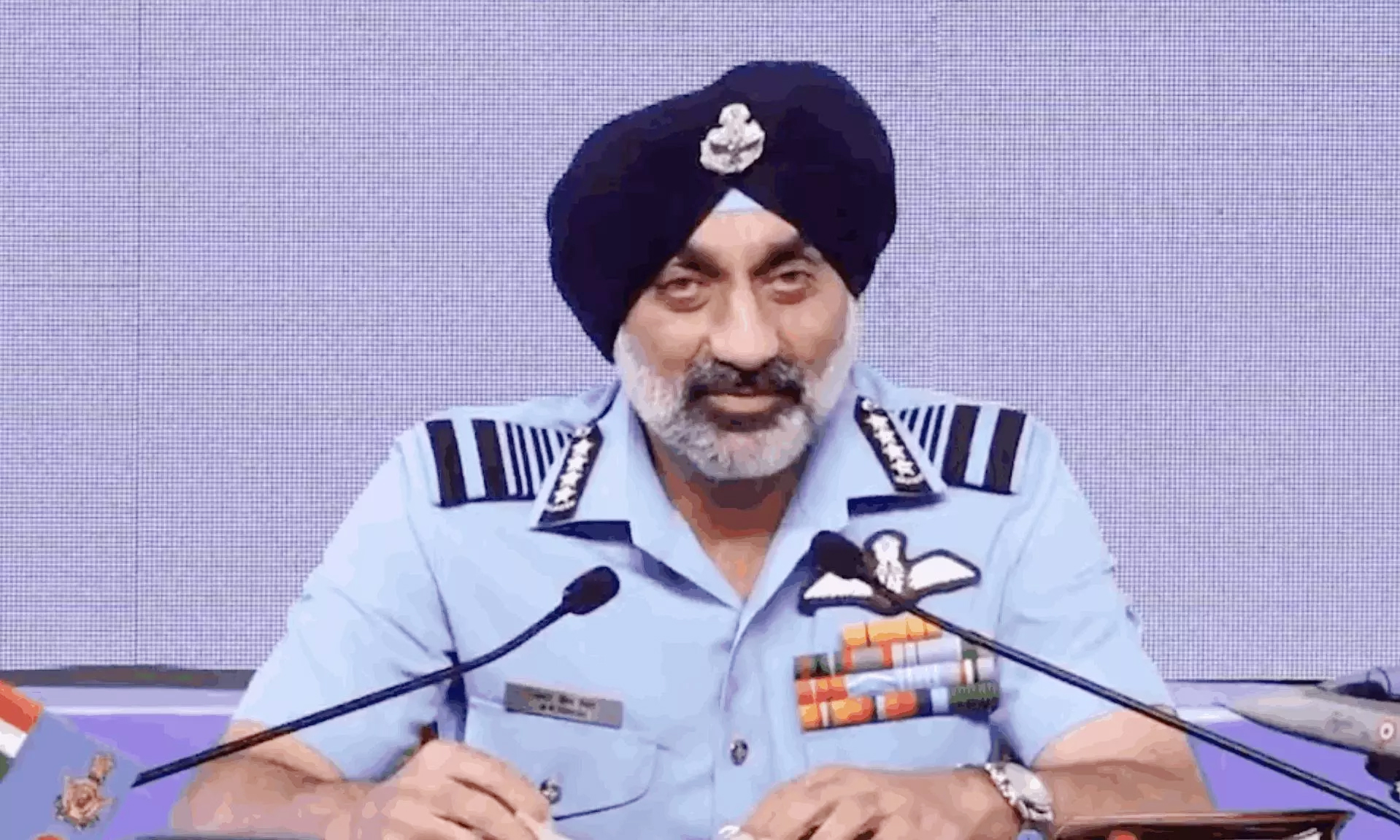| Pak lost 12 military aircraft, including 4 to 5 F-16 jets: Air Chief Marshal | | ‘Operation Sindoor’ | | 
Early Times Report
New Delhi, Oct 3: Terming Pakistan claims about it destroying Indian jets during ‘Operation Sindoor’ as “manohar kahaniyan (fascinating tales)” Chief of Air Staff Air Chief Marshal A P Singh on Friday said that at least a dozen Pakistani military aircraft, including F-16 jets were destroyed or damaged in Indian strikes.
While talking to reporters here the Air Chief Marshaloutlined the extensive losses suffered by Pakistan during the strikes carried out by the Indian military to avenge the April 22 Pahalgam terror attack that left 26 civilians, mostly tourists dead. “Indian strikes hit radars at least four places, command and control centres at two places, runways of course damaged at two places, then three of their hangars in three different stations were damaged.”
“We have signs of one C-130 class of aircraft...and at least one dozen military aircrafts, including 4 to 5 F-16 jets, because that place happened to be F-16 with whatever was under maintenance at that time,” he added.
The Air Force Chief Marshal said, “Along with that, one SAM system was destroyed. We have clear evidence of one long-range strike, which I talked about more than 300 km, which happened to be either an AEW&C or a SIGINT aircraft. Along with that, five high-tech fighters between F-16 and JF-17 class—this is what our system tells us.”
He said that during Operation Sindoor, the IAF’s advanced long-range surface-to-air missiles (SAMs) prevented Pakistan from operating even within its own territory up to a certain range.
While mocking Islamabad’s claim that it had downed Indian jets Singh said, “If they think they downed our 15 jets, I hope they are convinced about it and they will cater for 15 less aircraft in my inventory when they come to fight again.”
The IAF chief said India entered into conflict with Pakistan in May this year with a clear goal and ended it quickly after achieving its objectives. “This should serve as a lesson for the world, as many other ongoing wars have no end in sight,” he added.
“A clear directive, clear mandate was given to the Indian Armed Forces. It stands as a lesson which will go down in history that this is one war that was started with a very clear objective and it was terminated in a quick time without just prolonging it,” he said.
“We are seeing what is happening in the world, the two wars that are going on, there’s no talk about termination. But we could make them (Pakistan) reach a stage where they ask for a ceasefire, ask for termination of hostilities. And also, we took a call as a nation to terminate those hostilities because our own objectives were met. I think this is something that the world needs to learn from us,” Singh said.
The Air Chief Marshal said, “Wars will not be like before. We need to be prepared for current and future challenges with an integrated approach involving all services and agencies.”
“Self-reliance remains a central goal for the IAF. The Indian Air Force has placed orders for the LCA Mk1A, with development continuing on the LCA Mk2 and Indian Multi-Role Helicopter projects,” he said.
The IAF Chief said that several radars and systems are also being developed domestically.
He also spoke about successful joint exercises with countries like the UAE, Egypt, France, and Singapore, with foreign commanders showing interest in continuing these drills.
Sharing details about the forthcoming 93rd Air Force Day that will feature a parade at Hindon Air Base on October 8 with full rehearsal on October 6, Singh said, “A special flypast will include a Mi-17 helicopter carrying the Operation Sindoor flag. Static displays will present Rafale and Su-30 MKI fighters, transport aircraft, the Akash missile system, radars, and other equipment.”
“We’re showcasing 18 innovations that reflect the IAF’s drive for self-reliance and solutions-focused thinking. We’ve also played a key role in humanitarian operations across multiple Indian states this year,” he added. |
|
